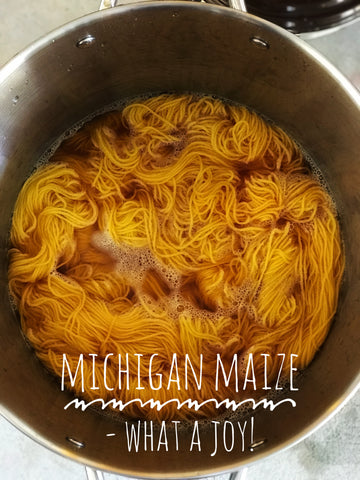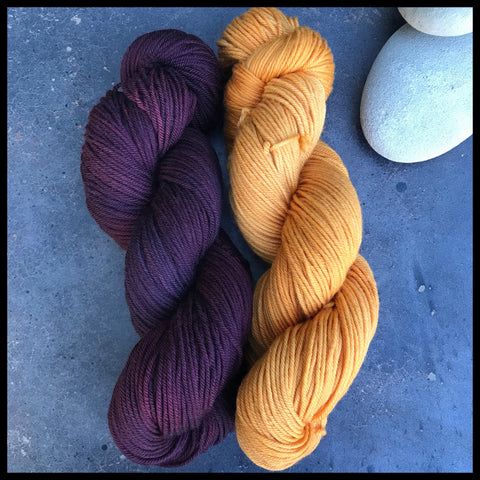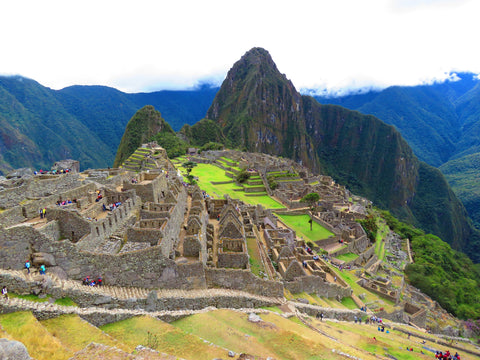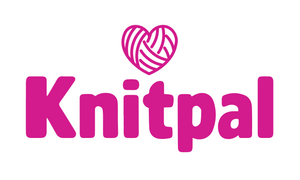
Your Hand Dyed Yarn Guide
One of the most rewarding parts of knitting and crocheting is using quality yarn to create with and the chance to work with hand-dyed yarn is indeed special.
However, if you are new to knitting or to hand-dyed yarn, it can be difficult to know what to look for to choose a quality yarn. That's why we've compiled this hand-dyed yarn shopping guide.
What is meant by hand-dyed yarn?
Hand-dyed yarn, as the name suggests, is yarn that has been treated with dyes by hand — usually in small batches.
The yarn is not of a specific type only, but is more often than not composed of (or largely composed of) natural fibers like wool, cotton, linen, bamboo, and silk.
What hand-dyed yarn is not
Although there are commercially dyed yarn that is made to look like, or look similar to hand-dyed yarn, these yarns are still dyed on a large scale with machines instead of being treated by hand in small batches.
For yarn to be considered hand dyed, it is imperative that the yarn is treated by hand. The most sought-after hand-dyed yarn is usually created by indie dyers as these are truly artisanal works of art in themselves.
What is an indie dyer?
An indie yarn dyer — or independent yarn dyer — work in small batches and dye all skeins of yarn by hand using a personal choice of dyes.

Most indie dyers use sites like Etsy or their own websites (like KnitPal) to sell their yarn. Indie dyers also - unlike the commercial dyers — have a much more limited range of yarns and dyes in which they specialize.
How to shop for quality hand-dyed yarn
When shopping for hand-dyed yarn, it’s very important to look past the beautiful colors to the basic elements of the yarn — what the yarn consists of and what type of dye or dyes have been used.
What does the yarn consist of?
Just like commercial dyers use different materials and fibers to make their yarn, so, too, hand dyers use different fibers and yarn bases to create their yarn. Knowing what the yarn consists of and whether it’s acrylic, natural, or a mixture of the two are important as some yarns are more suitable for certain projects.
So, for example, superwash merino with nylon is great for knitting socks from, while cotton or bamboo is not only vegan-friendly, but also perfect for making items for warmer weather or for making gifts for those who are sensitive to wool.
The labels of the yarn or at least its web page should state what the yarn is made of. KnitPal’s hand-dyed yarn, for example, is made from 100% merino wool. Other dyers’ yarn may be a mix of natural fibers, for example, a mix of silk and bamboo.
If you can’t seem to find out what the yarn is made from, it’s always a good idea to contact the dyer directly. They will also be able to tell you which dyeing method was used to create their yarn.
Reviews of the yarn
Make sure that you also read up about the artist and their shop, paying special attention to reviews of the yarn and how the yarn is created.
On a site like Etsy, a lot of buyers will leave comments or reviews about the products that they buy. You’ll soon be able to tell whether the yarn itself as well as the dyes are of a good quality.
What type of dyes were used on the yarn?
There are a variety of dyes which can be used to dye yarn. These dyes can be divided into two main categories - man-made and natural.
Man-made dyes include acid dyes, while natural dyes are usually made from plants like woad, avocado, various herbs, etc. The colors of naturally dyed yarn are usually a lot more muted than those dyed with man-made dyes.
Man-made dyes can even give neon or other exceptionally bright colors like cerise when used.
KnitPal yarn is dyed with man-made dyes in order to achieve the perfectly matched team spirit colors.
The appearance of different types of hand-dyed yarn
For the most part, hand-dyed yarn looks like it has been manually dyed. Here are some examples of the different types of color variations.
Tonal dyed yarn — There may be a “watercolor” effect or tonal dyeing, where the yarn is not the exact same shade throughout even though only closely matching of dye is used in the dyeing process. Unlike variegated yarn where the colors are applied next to each other with obvious color changes, tonal dyed yarn’s colors “melt” into each other to give an overall color with only slight changes instead of specific pooling or stripes.

Variegated yarn - those containing three or more colors - when hand-dyed, may also show overlapping or fading of colors depending on how the dye was applied to the yarn. Colors in these yarns are usually either different shades of the same color or matching colors, whether neutral or bright.
The colors in variegated yarn are also (usually) repeated in the same order throughout the skein and dye batch. Because it is done by hand, however, the different bands of color rarely line up exactly from skein to skein. This could cause unwanted pooling or striping of the colors.
Commercially-dyed variegated yarn, however, are very scientifically and carefully machine dyed in order to ensure that all the skeins match perfectly.
Hand-painted yarn — As the name suggests, the dye on these skeins are literally painted on by hand instead of dipping the yarn in dye or submerging the yarn in a pot of dye.
Hand-painted yarn often also repeat colors in much the same way as variegated yarn without merging into each other. Larger projects like shawls or sweaters can be very difficult to match exactly because of the differences in skeins caused by the painting.
Speckled yarn — Probably the yarn that differs most from skein to skein, is speckled yarn. To create the speckles and highlights of color on the yarn, the dye is spattered onto the yarn by hand to create a pleasing effect.
Kettle-dyed yarn - On the other side of the scale we have kettle-dyed yarn. This yarn can have very subtle color blends and changes (even more so than the tonal yarn). The effect that kettle-dyed yarn has is created by adding all the different dyes to the dye pot at the same time.
Ombre-dyed yarn — Also called long-striping yarn, this yarn is dyed with very long color changes and the colors very gradually melt into each other to almost create one long gradient from one color to another without visible “breaks” between the different dye colors.
Ombre yarn is also usually sold in large cakes that contain one full gradient, from one color to another.
Suppliers like Jimmy Beans Wool carries a large variety of hand-dyed yarn and can be viewed on their website.
What makes KnitPal Team Spirit Yarn different from other hand-dyed yarn?
KnitPal Team Spirit Yarn is in a class of its own when it comes to hand dyed yarn.
All KnitPal yarn is made from 100% Merino wool, which means that it is completely bio-degradable. This wool comes from the Andes of Southern Peru and is ethically sourced from mostly small, rural farms owned by women.
Because the farms are so high above sea level (11,500-16,000 feet above sea level), the sheep has adjusted to the great temperature fluctuations of up to 50 degrees in a day by growing very dense fleece. This fleece has a high thermal quality as well as being very durable.

Also, unlike the mismatched and unique skeins of the other hand-dyed yarns, KnitPal prides themselves on being able to match the different school and team colors to its Pantone color every time. The vibrant colors are sure to bring warmth to every knitting enthusiast’s heart!
Dyed with love and happiness, KnitPal yarns and kits are created to not only match your team’s colors to perfection but also to give you a wonderfully calm and blissful time working on your projects.
KnitPal also donates three pairs of socks to the children's emergency center in Pine Ridge Reservation as a way to give love and hope to the community.

